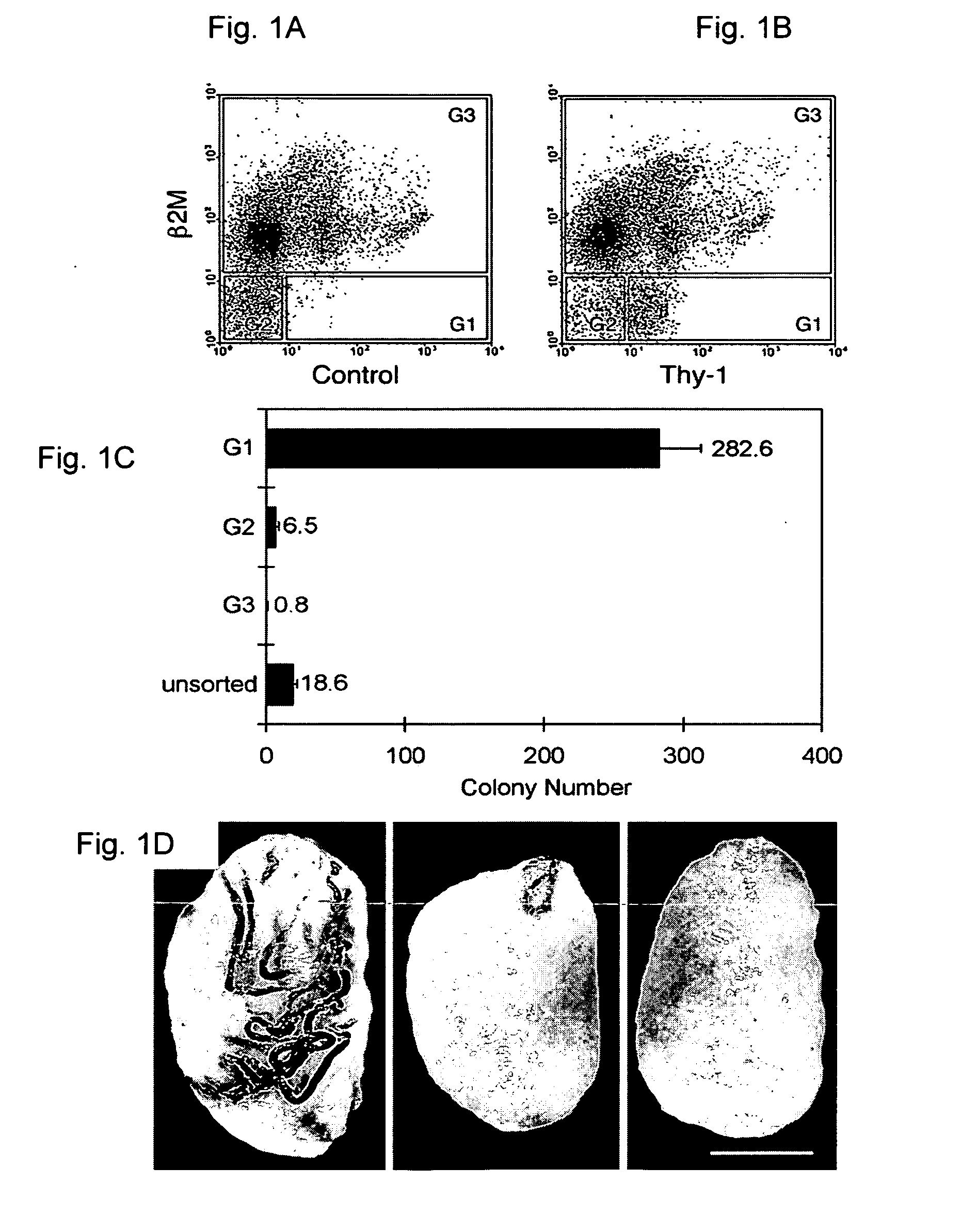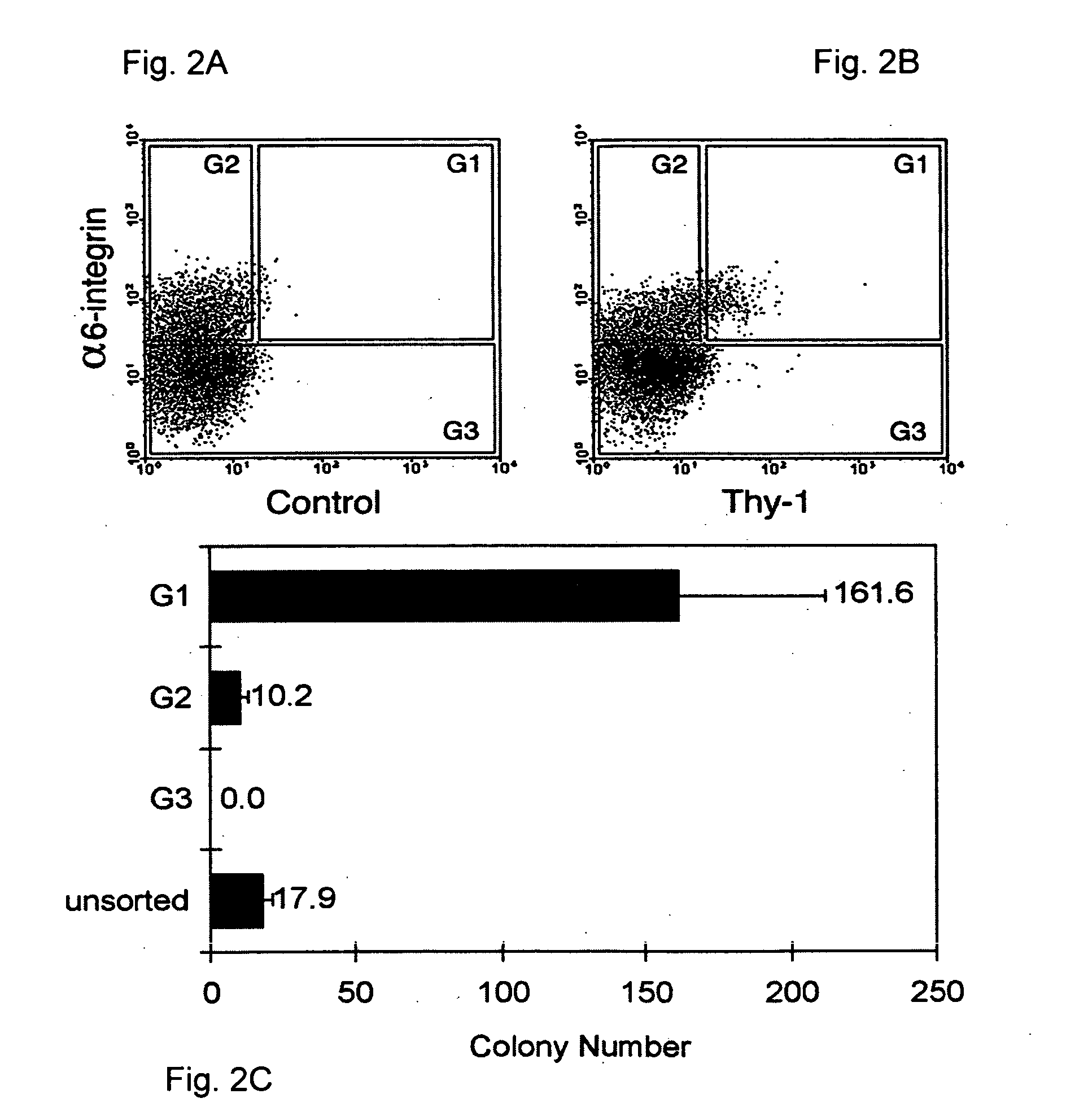Culture conditions and growth factors affecting fate determination, self-renewal and expansion of rat spermatogonial stem cells
a growth factor and fate determination technology, applied in cell culture active agents, instruments, biochemistry apparatus and processes, etc., can solve the problems of inability to examine the expression of thy-1 on sscs in neonate or pup testis, elusive mechanisms underlying the process of self-renewal and differentiation of sscs, and inability to eliminate inhibitory testis somatic cells.
- Summary
- Abstract
- Description
- Claims
- Application Information
AI Technical Summary
Benefits of technology
Problems solved by technology
Method used
Image
Examples
experimental examples
[0232] The invention is further described in detail by reference to the following experimental examples. These examples are provided for purposes of illustration only, and are not intended to be limiting unless otherwise specified. Thus, the invention should in no way be construed as being limited to the following examples, but rather, should be construed to encompass any and all variations which become evident as a result of the teaching provided herein.
experimental example 1
Enrichment of Spermatogonial Stem Cells using Thy-1 and Establishment of Non-Serum Culture Conditions for Spermatogonial Stem Cells
Donor Mice and Cell Collection
[0233] Cryptorchid and wild type adult donor testis cells were obtained from the transgenic mouse line B6.129S7-Gtrosa26 (designated ROSA; The Jackson Laboratory, Bar Habor, Me.) that expresses the Escherichia coli LacZ gene in virtually all cell types, including all stages of spermatogenesis (Nagano et al., APMIS, 106:47-55 (1998)). Neonate (0.5-1.5 days postpartum, dpp; day of birth is 0.5 dpp), and pup (4.5-5.5 dpp) testis cells were collected from the hemizygous transgenic mice, C57BL / 6×ROSA F1 hybrid. Experimental cryptorchid testes were produced as previously described (Shinohara et al., Dev. Biol., 220:401-11 (2000)). Cell suspensions from cryptorchid adult, wild type adult, neonate, and pup testes were prepared by enzymatic digestion (Ogawa et al., Int. J. Dev. Biol., 41:111-22 (1997)). In several experiments, tes...
experimental example 2
Growth Factors Required for Self-Renewal and Expansion of Mouse Spermatogonial Stem Cells (SSCs)
Donor Mice and Cell Collection.
[0258] Two transgenic mouse lines expressing reporter genes, B6.129S7-Gtrosa26 (designated ROSA; The Jackson Laboratory; Bar Harbor, Me.) and C57BL / 6-TgN(ACTbEGFP)1 Osb (designated C57GFP; The Jackson Laboratory; Bar Harbor, Me.) were used to distinguish donor cells from recipient cells after transplantation. ROSA mice express the Escherichaia coli lacZ gene that encodes a β-gal protein in virtually all cell types including all stages of spermatogenesis (Tegelenbosch et al., Mutat. Res., 290:193 (1993)). Donor ROSA cells are identified by staining with the β-gal substrate, 5-bromo-4-choloro-3-indolyl β-D-galactoside (X-gal). C57GFP mice express a GFP reporter gene under the control of the chicken β-actin promoter and cytomegalovirus immediate early enhancer (Brinster et al., Proc. Natl. Acad. Sci. U.S.A., 91:11303 (1994)). C57GFP is expressed in most cell...
PUM
| Property | Measurement | Unit |
|---|---|---|
| concentration | aaaaa | aaaaa |
| pH | aaaaa | aaaaa |
| pH | aaaaa | aaaaa |
Abstract
Description
Claims
Application Information
 Login to View More
Login to View More - R&D
- Intellectual Property
- Life Sciences
- Materials
- Tech Scout
- Unparalleled Data Quality
- Higher Quality Content
- 60% Fewer Hallucinations
Browse by: Latest US Patents, China's latest patents, Technical Efficacy Thesaurus, Application Domain, Technology Topic, Popular Technical Reports.
© 2025 PatSnap. All rights reserved.Legal|Privacy policy|Modern Slavery Act Transparency Statement|Sitemap|About US| Contact US: help@patsnap.com



